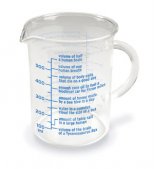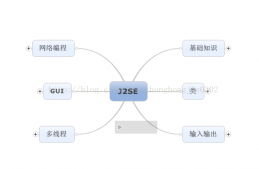本文实例讲述了java实现OpenGL ES纹理映射的方法。分享给大家供大家参考。具体如下:
1. GlRenderer.java文件:
|
1
2
3
4
5
6
7
8
9
10
11
12
13
14
15
16
17
18
19
20
21
22
23
24
25
26
27
28
29
30
31
32
33
34
35
36
37
38
39
40
41
42
43
44
45
46
47
48
49
50
51
52
53
54
55
56
57
58
|
package net.obviam.opengl;import javax.microedition.khronos.egl.EGLConfig;import javax.microedition.khronos.opengles.GL10;import android.content.Context;import android.opengl.GLU;import android.opengl.GLSurfaceView.Renderer;public class GlRenderer implements Renderer { private Square square; // the square private Context context; /** Constructor to set the handed over context */ public GlRenderer(Context context) { this.context = context; // initialise the square this.square = new Square(); } @Override public void onDrawFrame(GL10 gl) { // clear Screen and Depth Buffer gl.glClear(GL10.GL_COLOR_BUFFER_BIT | GL10.GL_DEPTH_BUFFER_BIT); // Reset the Modelview Matrix gl.glLoadIdentity(); // Drawing gl.glTranslatef(0.0f, 0.0f, -5.0f); // move 5 units INTO the screen // is the same as moving the camera 5 units away// gl.glScalef(0.5f, 0.5f, 0.5f);// scale the square to 50% // otherwise it will be too large square.draw(gl); // Draw the triangle } @Override public void onSurfaceChanged(GL10 gl, int width, int height) { if(height == 0) { //Prevent A Divide By Zero By height = 1; //Making Height Equal One } gl.glViewport(0, 0, width, height); //Reset The Current Viewport gl.glMatrixMode(GL10.GL_PROJECTION); //Select The Projection Matrix gl.glLoadIdentity(); //Reset The Projection Matrix //Calculate The Aspect Ratio Of The Window GLU.gluPerspective(gl, 45.0f, (float)width / (float)height, 0.1f, 100.0f); gl.glMatrixMode(GL10.GL_MODELVIEW); //Select The Modelview Matrix gl.glLoadIdentity(); //Reset The Modelview Matrix } @Override public void onSurfaceCreated(GL10 gl, EGLConfig config) { // Load the texture for the square square.loadGLTexture(gl, this.context); gl.glEnable(GL10.GL_TEXTURE_2D); //Enable Texture Mapping ( NEW ) gl.glShadeModel(GL10.GL_SMOOTH); //Enable Smooth Shading gl.glClearColor(0.0f, 0.0f, 0.0f, 0.5f); //Black Background gl.glClearDepthf(1.0f); //Depth Buffer Setup gl.glEnable(GL10.GL_DEPTH_TEST); //Enables Depth Testing gl.glDepthFunc(GL10.GL_LEQUAL); //The Type Of Depth Testing To Do //Really Nice Perspective Calculations gl.glHint(GL10.GL_PERSPECTIVE_CORRECTION_HINT, GL10.GL_NICEST); }} |
2. Square.java文件:
|
1
2
3
4
5
6
7
8
9
10
11
12
13
14
15
16
17
18
19
20
21
22
23
24
25
26
27
28
29
30
31
32
33
34
35
36
37
38
39
40
41
42
43
44
45
46
47
48
49
50
51
52
53
54
55
56
57
58
59
60
61
62
63
64
65
66
67
68
69
70
71
72
73
74
75
76
77
78
79
80
81
82
83
84
85
|
package net.obviam.opengl;import java.nio.ByteBuffer;import java.nio.ByteOrder;import java.nio.FloatBuffer;import javax.microedition.khronos.opengles.GL10;import android.content.Context;import android.graphics.Bitmap;import android.graphics.BitmapFactory;import android.opengl.GLUtils;public class Square { private FloatBuffer vertexBuffer; // buffer holding the vertices private float vertices[] = { -1.0f, -1.0f, 0.0f, // V1 - bottom left -1.0f, 1.0f, 0.0f, // V2 - top left 1.0f, -1.0f, 0.0f, // V3 - bottom right 1.0f, 1.0f, 0.0f // V4 - top right }; private FloatBuffer textureBuffer; // buffer holding the texture coordinates private float texture[] = { // Mapping coordinates for the vertices 0.0f, 1.0f, // top left (V2) 0.0f, 0.0f, // bottom left (V1) 1.0f, 1.0f, // top right (V4) 1.0f, 0.0f // bottom right (V3) }; /** The texture pointer */ private int[] textures = new int[1]; public Square() { // a float has 4 bytes so we allocate for each coordinate 4 bytes ByteBuffer byteBuffer = ByteBuffer.allocateDirect(vertices.length * 4); byteBuffer.order(ByteOrder.nativeOrder()); // allocates the memory from the byte buffer vertexBuffer = byteBuffer.asFloatBuffer(); // fill the vertexBuffer with the vertices vertexBuffer.put(vertices); // set the cursor position to the beginning of the buffer vertexBuffer.position(0); byteBuffer = ByteBuffer.allocateDirect(texture.length * 4); byteBuffer.order(ByteOrder.nativeOrder()); textureBuffer = byteBuffer.asFloatBuffer(); textureBuffer.put(texture); textureBuffer.position(0); } /** * Load the texture for the square * @param gl * @param context */ public void loadGLTexture(GL10 gl, Context context) { // loading texture Bitmap bitmap = BitmapFactory.decodeResource(context.getResources(), R.drawable.android); // generate one texture pointer gl.glGenTextures(1, textures, 0); // ...and bind it to our array gl.glBindTexture(GL10.GL_TEXTURE_2D, textures[0]); // create nearest filtered texture gl.glTexParameterf(GL10.GL_TEXTURE_2D, GL10.GL_TEXTURE_MIN_FILTER, GL10.GL_NEAREST); gl.glTexParameterf(GL10.GL_TEXTURE_2D, GL10.GL_TEXTURE_MAG_FILTER, GL10.GL_LINEAR); //Different possible texture parameters, e.g. GL10.GL_CLAMP_TO_EDGE// gl.glTexParameterf(GL10.GL_TEXTURE_2D, GL10.GL_TEXTURE_WRAP_S, GL10.GL_REPEAT);// gl.glTexParameterf(GL10.GL_TEXTURE_2D, GL10.GL_TEXTURE_WRAP_T, GL10.GL_REPEAT); // Use Android GLUtils to specify a two-dimensional texture image from our bitmap GLUtils.texImage2D(GL10.GL_TEXTURE_2D, 0, bitmap, 0); // Clean up bitmap.recycle(); } /** The draw method for the square with the GL context */ public void draw(GL10 gl) { // bind the previously generated texture gl.glBindTexture(GL10.GL_TEXTURE_2D, textures[0]); // Point to our buffers gl.glEnableClientState(GL10.GL_VERTEX_ARRAY); gl.glEnableClientState(GL10.GL_TEXTURE_COORD_ARRAY); // Set the face rotation gl.glFrontFace(GL10.GL_CW); // Point to our vertex buffer gl.glVertexPointer(3, GL10.GL_FLOAT, 0, vertexBuffer); gl.glTexCoordPointer(2, GL10.GL_FLOAT, 0, textureBuffer); // Draw the vertices as triangle strip gl.glDrawArrays(GL10.GL_TRIANGLE_STRIP, 0, vertices.length / 3); //Disable the client state before leaving gl.glDisableClientState(GL10.GL_VERTEX_ARRAY); gl.glDisableClientState(GL10.GL_TEXTURE_COORD_ARRAY); }} |
3. Triangle.java文件:
|
1
2
3
4
5
6
7
8
9
10
11
12
13
14
15
16
17
18
19
20
21
22
23
24
25
26
27
28
29
30
31
32
33
34
35
36
37
38
39
40
41
|
package net.obviam.opengl;import java.nio.ByteBuffer;import java.nio.ByteOrder;import java.nio.FloatBuffer;import javax.microedition.khronos.opengles.GL10;public class Triangle { private FloatBuffer vertexBuffer; // buffer holding the vertices private float vertices[] = { -0.5f, -0.5f, 0.0f, // V1 - first vertex (x,y,z) 0.5f, -0.5f, 0.0f, // V2 - second vertex 0.0f, 0.5f, 0.0f // V3 - third vertex// 1.0f, 0.5f, 0.0f // V3 - third vertex }; public Triangle() { // a float has 4 bytes so we allocate for each coordinate 4 bytes ByteBuffer vertexByteBuffer = ByteBuffer.allocateDirect(vertices.length * 4); vertexByteBuffer.order(ByteOrder.nativeOrder()); // allocates the memory from the byte buffer vertexBuffer = vertexByteBuffer.asFloatBuffer(); // fill the vertexBuffer with the vertices vertexBuffer.put(vertices); // set the cursor position to the beginning of the buffer vertexBuffer.position(0); } /** The draw method for the triangle with the GL context */ public void draw(GL10 gl) { gl.glEnableClientState(GL10.GL_VERTEX_ARRAY); // set the colour for the background// gl.glClearColor(0.0f, 0.0f, 0.0f, 0.5f); // to show the color (paint the screen) we need to clear the color buffer// gl.glClear(GL10.GL_COLOR_BUFFER_BIT); // set the colour for the triangle gl.glColor4f(0.0f, 1.0f, 0.0f, 0.5f); // Point to our vertex buffer gl.glVertexPointer(3, GL10.GL_FLOAT, 0, vertexBuffer); // Draw the vertices as triangle strip gl.glDrawArrays(GL10.GL_TRIANGLE_STRIP, 0, vertices.length / 3); //Disable the client state before leaving gl.glDisableClientState(GL10.GL_VERTEX_ARRAY); }} |
4. Run.java文件:
|
1
2
3
4
5
6
7
8
9
10
11
12
13
14
15
16
17
18
19
20
21
22
23
24
25
26
27
28
29
30
31
32
33
34
35
36
37
38
39
40
41
42
43
|
package net.obviam.opengl;import android.app.Activity;import android.opengl.GLSurfaceView;import android.os.Bundle;import android.view.Window;import android.view.WindowManager;public class Run extends Activity { /** The OpenGL view */ private GLSurfaceView glSurfaceView; /** Called when the activity is first created. */ @Override public void onCreate(Bundle savedInstanceState) { super.onCreate(savedInstanceState); // requesting to turn the title OFF requestWindowFeature(Window.FEATURE_NO_TITLE); // making it full screen getWindow().setFlags(WindowManager.LayoutParams.FLAG_FULLSCREEN, WindowManager.LayoutParams.FLAG_FULLSCREEN); // Initiate the Open GL view and // create an instance with this activity glSurfaceView = new GLSurfaceView(this); // set our renderer to be the main renderer with // the current activity context glSurfaceView.setRenderer(new GlRenderer(this)); setContentView(glSurfaceView); } /** * Remember to resume the glSurface */ @Override protected void onResume() { super.onResume(); glSurfaceView.onResume(); } /** * Also pause the glSurface */ @Override protected void onPause() { super.onPause(); glSurfaceView.onPause(); }} |
希望本文所述对大家的java程序设计有所帮助。














